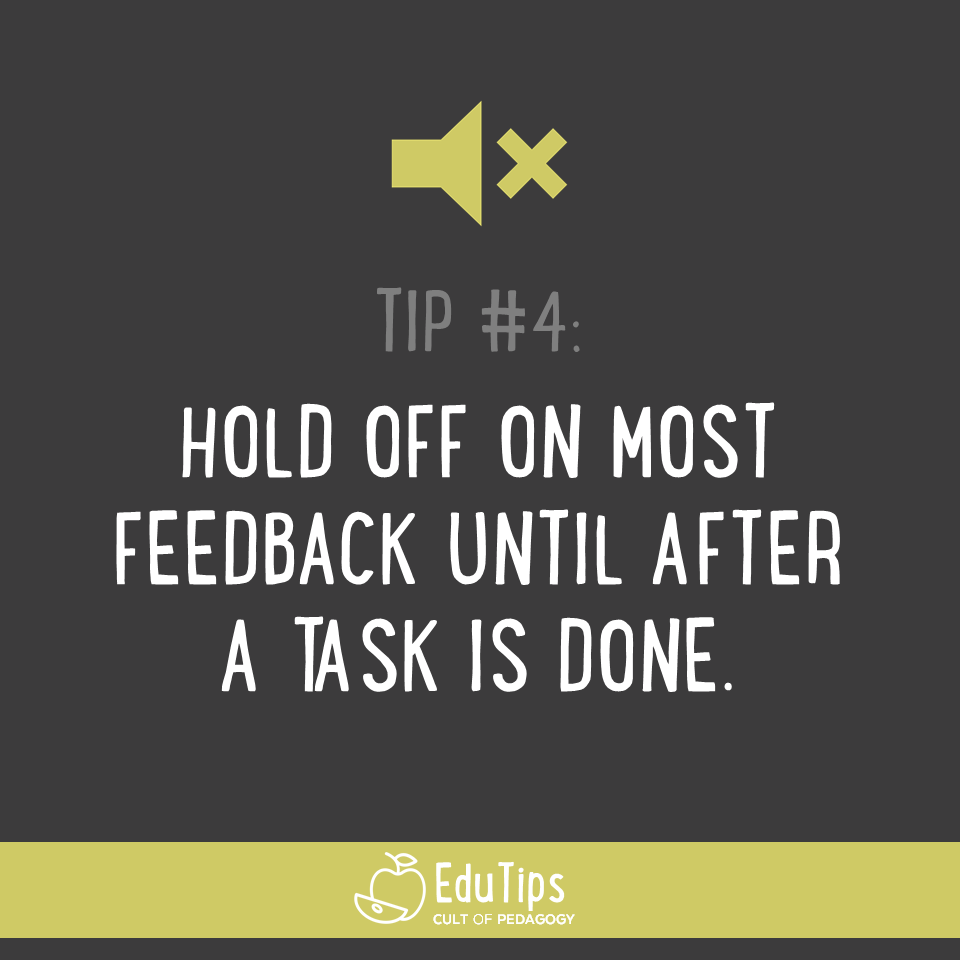Sponsored by Reading Progress in Teams.

When students are in the middle of learning to do something, and we see them making a mistake, or maybe just needing some improvement, we may be tempted to stop them and offer a correction.
It may be best to resist that temptation. Many educators understand that feedback is most valuable when it is given in a timely manner—soon after a student completes a task, but a number of studies (listed below) have shown that when feedback interrupts the learning process, it can be detrimental to learning. Feedback given soon after a task is completed results in more accurate and long-lasting learning.
The theory behind this is that too much feedback during a task robs the learner of the opportunity to develop their own internal sense for how to do the task correctly. They can become dependent on the feedback and, once that feedback is removed, be unable to self-correct. By contrast, when a learner gets feedback after a task, they can take that information into the next attempt and continue to hone their own neural pathways that tell them the right way to do it.
This principle doesn’t necessarily apply to all students in all situations. When someone is first learning a task, they may need more frequent feedback to get closer to the desired behavior, but always keep in mind that at some point, the learner needs to spend some time struggling with the task on their own, making their own judgments about what move to make next, rather than relying on constant feedback from an instructor, a coach, or a peer.
You know your students and your subject area best, so experiment with the timing of feedback to see what works best for you. It would also be useful to ask your students: Does it help you more when I correct you while you’re doing this, or would you rather I wait until after? Explain that the long-term goal is to have students be able to do the task independently without any guidance from you—to be able to give themselves feedback—and that slowing down the frequency of your feedback is part of the plan to get them there.
So the next time you’re observing a student doing something, trying something new, and you get that instinct to jump in and offer advice? Hold back. Give them a chance to work through it themselves, then give some feedback.
Some studies that support delaying feedback:
Butler, A. C., Karpicke, J. D., & Roediger, H. L. (2007). The effect of type and timing of feedback on learning from multiple-choice tests. Journal of Experimental Psychology: Applied, 13(4), 273–281. https://doi.org/10.1037/1076-898x.13.4.273
Park, J.-H., Shea, C. H., & Wright, D. L. (2000). Reduced-Frequency Concurrent and Terminal Feedback: A Test of the Guidance Hypothesis. Journal of Motor Behavior, 32(3), 287–296. https://doi.org/10.1080/00222890009601379
Shute, V. J. (2008). Focus on Formative Feedback. Review of Educational Research, 78(1), 153–189. https://doi.org/10.3102/0034654307313795
Walsh, C. M., Ling, S. C., Wang, C. S., & Carnahan, H. (2009). Concurrent Versus Terminal Feedback: It May Be Better to Wait. Academic Medicine, 84(Supplement), S54–S57. https://doi.org/10.1097/acm.0b013e3181b38daf
Winstein, C. J., Pohl, P. S., & Lewthwaite, R. (1994). Effects of Physical Guidance and Knowledge of Results on Motor Learning: Support for the Guidance Hypothesis. Research Quarterly for Exercise and Sport, 65(4), 316–323. https://doi.org/10.1080/02701367.1994.10607635
See all EduTips here.
